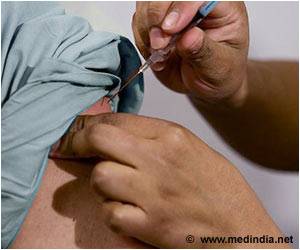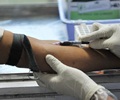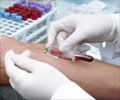At the International Liver Congress™ 2013, exciting new data presented includes results from early in vitro and in vivo studies targeting covalently closed circular DNA (cccDNA).

Liver regeneration induces strong reduction of viral replication and cccDNA levels, but not complete cccDNA eradication; without antiviral treatment, de novo HBV infection can be re-established.
Key findings of research in HBV-infected human hepatocytes using the uPA/SCID chimeric mouse system show that liver regeneration induces strong reduction of viral replication and cccDNA levels, with rapid formation of cccDNA-free hepatocytes. However, because complete cccDNA eradication is not achieved, in the absence of antiviral treatment, de novo HBV infection could be re-established in quiescent (non-dividing) human hepatocytes. This suggests that induction of hepatocyte turn-over together with antiviral drugs inducing viral suppression, such as nucleoside analogues and IFN, or blocking cell entry, may accelerate the clearance of the viral minichromosome.
Targeting epigenetic control of nuclear cccDNA minichromosome to suppress HBV transcription and replication may form basis for other therapeutic approaches to curing chronic HBV infection.
In the infected liver cell the rate of replication of HBV is regulated by the acetylation or methylation of histone proteins which surround the cccDNA minichromosome – so called epigenetic regulation. In a separate innovative study, the suppression of HBV transcription and replication by small molecules that target the epigenetic control of nuclear cccDNA minichromosome was investigated. The different classes of small molecules studied included: Class I, II and III histone deacetylase inhibitors (HDACi); p300 and PCAF histone acetyltransferases (HAT) inhibitors; hSirt1 activators; JMJD3 histone demethylase inhibitors.
The combined inhibition of p300 and PCAF HATs resulted in an evident reduction of HBV replication which mirrored the decrease of pgRNA transcription. The hSirt1/2 activator MC2791 and the JMJD3 inhibitor MC3119, albeit with different efficiency, inhibited both HBV replication and cccDNA transcription. Results represent a proof of concept that activation of hSirt1 and Ezh2 (through the inhibition of its functional antagonist JMJD3) by small molecules can induce an active epigenetic suppression of HBV cccDNA minichromosome similar to that observed with IFNα, and lead to persistent cccDNA silencing.
Advertisement
The final study demonstrated that stimulating the lymphtoxin beta receptor (LTbR) provides an effective, long lasting and non-cytopathic mechanism for achieving effective HBV-cccDNA depletion in infected hepatocytes. Cell culture models including HBV-infected HepaRG cells and primary human hepatocytes were used to test the effect of antibodies stimulating human LTbR (BS1 or CBE11). Results show that a strong and dose-dependent anti-HBV effect was achieved by activation of the LTbR. All HBV replication markers were decreased with this treatment, including cccDNA in cells where HBV infection was already established.
Advertisement
"Current treatments focus on suppression of HBV and discovery of compounds directly targeting cccDNA has been one of the major challenges to curing HBV infection; but these preliminary data show novel therapeutic approaches can be applied to successfully target cccDNA with the long-term aspiration of finding a cure" added Prof. Fabien Zoulim.
Source-Eurekalert















